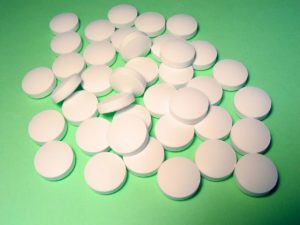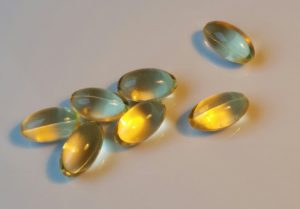 Some depressing news for pregnant women - they are exposed to and contaminated with more harmful industrial chemicals than ever before.
Some depressing news for pregnant women - they are exposed to and contaminated with more harmful industrial chemicals than ever before.
Thousands of chemicals are used in numerous consumer products and in food production (on farms, and in packaging). Not only can we get exposed to industrial chemicals from foods and products, but also from contaminated water, air, and dust.
Researchers looked for the presence of 103 industrial chemicals in the urine of pregnant women across the Unites States. The chemicals included plastics, pesticides, parabens, PAHs, as well as some of the "replacement chemicals" for BPA and phthalates. They found that most women had some of the chemicals in their bodies. Some chemicals were found in almost or ALL of them, including 3 insecticides, 2 parabens, 10 phthalates, and 1 PAH. Yikes!
Keep in mind that replacement chemicals (e.g., BPS for BPA) can be the same or even worse to health than the original chemicals.
 Also, the researchers did NOT look for the presence of some commonly used chemicals (and which are linked to health harms) such as 2,4-D, pyrethroids, chlorpyrifos, and glyphosate. These are pesticides commonly used on (non-organic) farms, but also in our homes and yards. Other studies find the amounts of these pesticides are increasing in humans over the last 2 decades, and that some of these pesticides can be detected in the majority of humans.
Also, the researchers did NOT look for the presence of some commonly used chemicals (and which are linked to health harms) such as 2,4-D, pyrethroids, chlorpyrifos, and glyphosate. These are pesticides commonly used on (non-organic) farms, but also in our homes and yards. Other studies find the amounts of these pesticides are increasing in humans over the last 2 decades, and that some of these pesticides can be detected in the majority of humans.
Pregnancy is an especially important time in the life of the developing baby, and many chemicals are much more harmful then than at any other time in life. Chemicals to which pregnant women are exposed to cross the placenta - thus getting to the fetus. So it is really important to lower the amount and number of chemicals that a pregnant woman is exposed to.
How to lower your exposure to harmful chemicals: [From list of quick tips]
1) Eat as many organic foods as possible.
2) Avoid using pesticides in your home and garden, and instead look for nontoxic, organic, or least toxic IPM (Integrated Pest Management) solutions.
3) Read labels to avoid phthalates, parabens, "antimicrobial", anti-odor in personal care items.
4) Don't use dryer sheets (not needed!) or detergents or other products with fragrances. [ Complete list of quick tips.]
Two good, but different write-ups of the research: 1) From Medical Xpress: Study of pregnant women finds increasing exposure to chemicals from plastics and pesticides
A national study that enrolled a highly diverse group of pregnant women over 12 years found rising exposure to chemicals from plastics and pesticides that may be harmful to development. ...continue reading "Pregnant Women Are Exposed To More Chemicals and Pesticides"

 There is growing evidence that the presence of certain species of bacteria in the gut microbiome are associated with a higher stroke risk, while other bacteria are associated with a lower risk and health. Two
There is growing evidence that the presence of certain species of bacteria in the gut microbiome are associated with a higher stroke risk, while other bacteria are associated with a lower risk and health. Two  To improve your gut microbes and lower stroke risk: most important is to improve your diet (eat a healthy diet rich in fruits, vegetables, whole grains, nuts, seeds, legumes, some fermented foods, and try to avoid highly processed foods). Also, good for gut microbes: increase your physical activity or amounts of exercise, don't smoke, and try to maintain a healthy weight. Another option is getting a fecal microbial transplant.
To improve your gut microbes and lower stroke risk: most important is to improve your diet (eat a healthy diet rich in fruits, vegetables, whole grains, nuts, seeds, legumes, some fermented foods, and try to avoid highly processed foods). Also, good for gut microbes: increase your physical activity or amounts of exercise, don't smoke, and try to maintain a healthy weight. Another option is getting a fecal microbial transplant. Americans spend enormous amounts of money on vitamins and mineral supplements in an effort to stay healthy or to improve their health. Unfortunately, unless a person has an actual vitamin or mineral deficiency, studies are just not finding health benefits. Sometimes there are even harms.
Americans spend enormous amounts of money on vitamins and mineral supplements in an effort to stay healthy or to improve their health. Unfortunately, unless a person has an actual vitamin or mineral deficiency, studies are just not finding health benefits. Sometimes there are even harms. What to do to maintain or improve health? Eat a healthy diet rich in fruits, vegetables, whole grains, legumes (beans), seeds, and nuts. Get enough exercise or physical activity. Don't smoke. Maintain a healthy weight.
What to do to maintain or improve health? Eat a healthy diet rich in fruits, vegetables, whole grains, legumes (beans), seeds, and nuts. Get enough exercise or physical activity. Don't smoke. Maintain a healthy weight. Some good news for coffee drinkers - daily consumption of coffee is linked to a lower risk of acute kidney injury.
Some good news for coffee drinkers - daily consumption of coffee is linked to a lower risk of acute kidney injury. Summer is when many of us indulge ourselves at barbecues or other social gatherings. Fabulous grilled foods, fresh fruits, pies, whipped cream! You may wonder what gorging yourself until you absolutely can't eat one bite more at one meal does to your body. It turns out it's OK!
Summer is when many of us indulge ourselves at barbecues or other social gatherings. Fabulous grilled foods, fresh fruits, pies, whipped cream! You may wonder what gorging yourself until you absolutely can't eat one bite more at one meal does to your body. It turns out it's OK!
 Some good news. A recent large study found that a healthy diet rich in plant-based foods can lower your risk of getting type 2 diabetes.
Some good news. A recent large study found that a healthy diet rich in plant-based foods can lower your risk of getting type 2 diabetes. The studies are coming fast and furious about how all daily physical activity has health benefits. Ordinary daily activities that cause a person to move, such as housework, vacuuming, washing dishes, gardening, walking, cooking, even showering - all count. (On the other hand, reading and computer use do not.)
The studies are coming fast and furious about how all daily physical activity has health benefits. Ordinary daily activities that cause a person to move, such as housework, vacuuming, washing dishes, gardening, walking, cooking, even showering - all count. (On the other hand, reading and computer use do not.) Yesterday's
Yesterday's